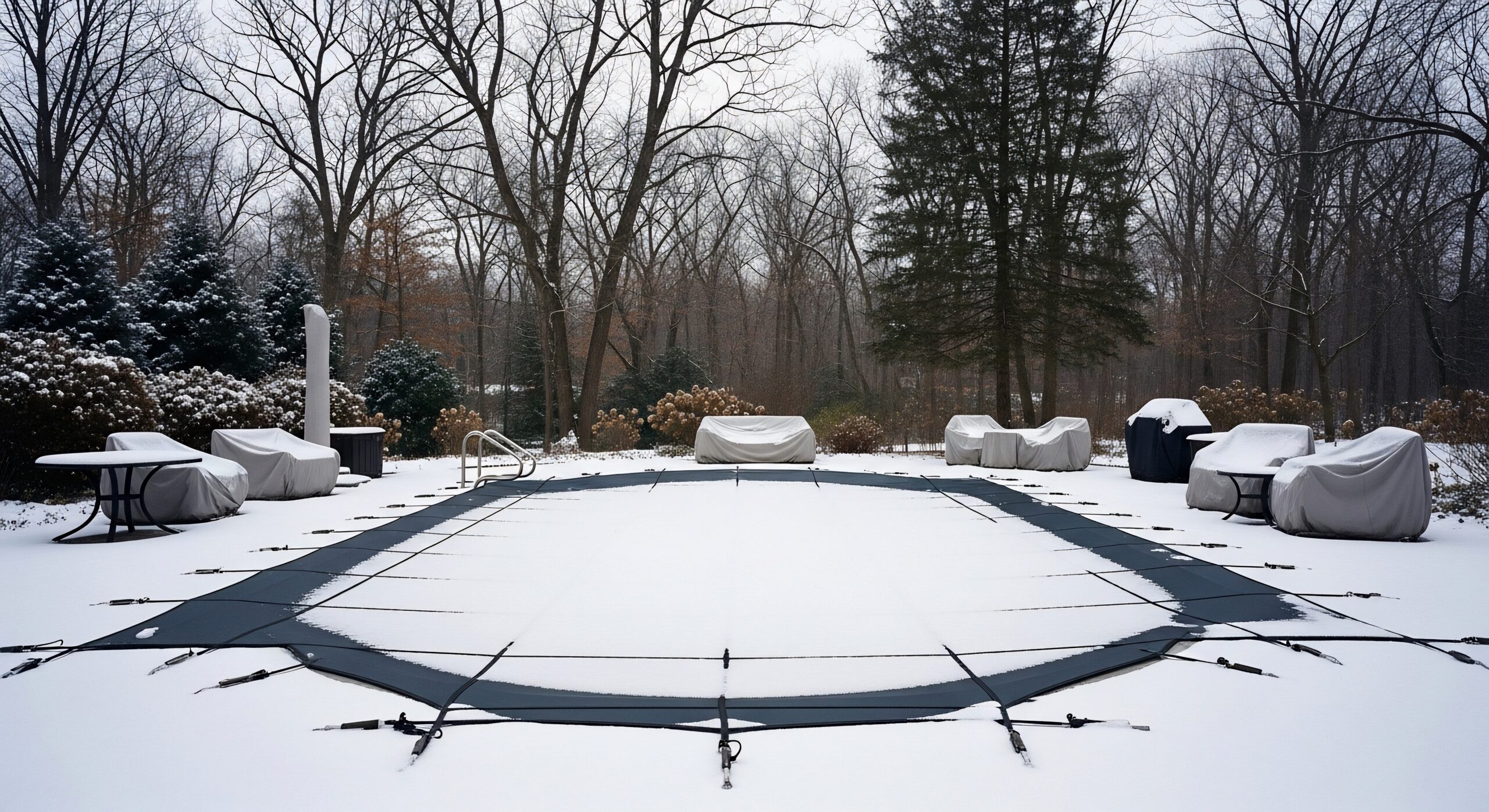As temperatures drop and the days grow shorter, your outdoor living space will require maintenance and care. Preparing your paver patio for winter helps protect your investment, prevent costly damage and ensure it’s ready to enjoy again when warmer weather returns.
Here are a few tips to keep your patio looking beautiful and performing its best all winter long.
1. Clear and Clean the Surface
The first step in winterizing your patio is a good cleaning. Remove the furniture, plants and decorations so you can clearly see the entire surface. Sweep away leaves, dirt and other debris, paying special attention to the cracks in the joints where dirt and moisture can build up.
For a good cleaning, use a mild detergent and water or a pressure washer on a low setting. Rinse well to get rid of all residue so it doesn’t become slippery in freezing conditions
2. Inspect for Damage or Settling
Walk around your patio looking for signs of uneven pavers, cracking and deterioration of the joints. These are issues that could worsen during the winter in the freezing and thawing cycles as moisture can develop.
Repairing or replacing a few pavers at this time before the frost hits could prevent you from having to do extensive work in the spring. If, in your inspection, you see extensive settling, drainage or cracking problems, it may be beneficial to consult a Belgard Authorized Contractor for professional advice and repairs.
3. Re-apply Joint Sand
Over a period of time, joint sand can wash out or be eroded, especially after a busy summer season. Refilling the joints with Techniseal polymeric sand will lock the pavers tightly together and discourage weed growth.
For a step-by-step guide on how to apply polymeric paver sand to your patio, click here.
4. Seal for Protection
Sealing your pavers is one of the best ways to protect them from the harsh winter conditions. A good sealer will protect from stains from leaves, de-icing products and moisture. It will also help enhance the appearance of the color and textures of your patio.
For more information about sealers and recommendations on application, visit the Techniseal website.
5. Manage Snow and Ice Carefully
When snow arrives, using metal shovels is best avoided as they can scratch or chip the surface of pavers. Choose plastic shovels or snow blowers equipped with rubber blades.
Avoid using rock salt deicers as they can harm the pavers, trees and vegetation around them. Instead, opt for a paver-safe deicer consisting of magnesium chloride. Most salt-based deicers will do more harm than good because sodium will cause your pavers to degrade.
Everything About Concrete has a good roundup of which deicers are best for which areas, in which they compare deicers across the three main categories: environment, temperature and corrosive properties.
6. Protect Furniture and Accessories
Outdoor furniture, grills, and planters should be cleaned and stored or covered to prevent rust, cracking or staining. Using breathable covers helps prevent condensation buildup beneath.
If you’re short on storage space, stack furniture neatly and elevate it slightly using wooden blocks to keep it off the patio surface and promote airflow.
7. Check Drainage and Gutters
Before heavy precipitation arrives, make sure your gutters and downspouts are clear and that water drains away from your patio. Standing water is a leading cause of frost heave and surface damage during freezing weather.
Proper drainage not only protects your home and paver patio, but it also keeps adjacent landscaping in good condition.
Enjoy Peace of Mind All Winter
By taking these simple steps, you’ll extend the life of your paver patio and preserve its beauty for years to come. A little preparation now means less maintenance later, and more time to relax when the warm days of spring arrive.
For more expert tips on caring for your outdoor living spaces, connect with your local Belgard Authorized Contractor.

